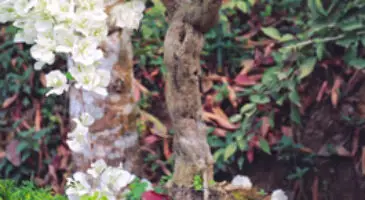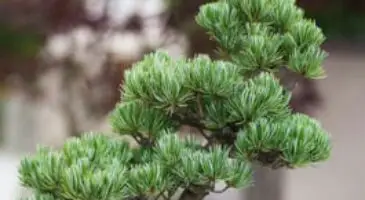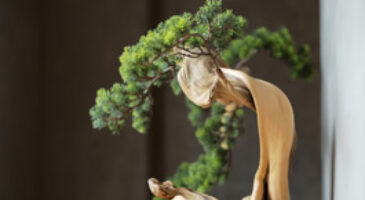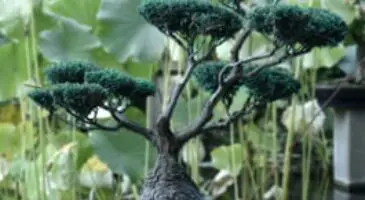Table of Contents
Keeping a Bonsai tree comes with lots of perks; both physical and spiritual benefits, and that is why they are one of the most popular choices among indoor plant lovers. But for me, what intrigues me about the tree is the possibility of perfectly recreating a particular species of a Bonsai tree.
Through a process called air layering, you can create a clone of your Bonsai tree without doing it the conventional way like budding, grafting, and others. The process involved is simple, and I shall discuss extensively every step involved in “how to air layer a Bonsai tree” in this bonsai guide. So read on.
What is air layering
Air layering is a propagative method in which new trees and shrubs are born from stems belonging to a parent plant. The process involves wrapping moisturized moss around the stem to stimulate the growth of roots for the new plant.
Can you air layer all types of trees
Yes, you can air layer virtually all types of trees, whether it be fruit, nut, tropical, ornamental, or evergreen trees. The only setback peculiar to each type of tree is the time it takes each to get air layered. While it is easy and faster for some trees to get air layered, in some it is difficult and takes a longer time.
For example; for some trees like bucida spinosa and amur maple bonsai, the whole process is simple and can be completed within a short time. Whereas in some trees like Pines, the whole process is more difficult and takes a longer time to complete.
Can you air layer a Bonsai tree
Yes, you can air layer a Bonsai tree. In fact, it is advisable to get your Bonsai tree air layered because it is proven that it can improve their quality altogether. Also, defects in a Bonsai trunk or branch (which will form the basis for the root of the new tree to be generated) can be corrected through air layering.
What is Bonsai air layering
Bonsai air layering is a technique used by botanists to create a clone of a Bonsai tree by making two parallel cuts on the parent plant to generate roots for the new Bonsai tree to be born. This process can be carried out in two major ways, The Tourniquet and the Ring methods.
Tourniquet method of Bonsai air layering
This process involves tying copper wire around the branch or trunk of a Bonsai tree so that the flow of nutrients through the system is partially interrupted. As the Bonsai tree is growing bigger and thicker, the flow of nutrients will reduce, forcing a new root to be form right about where the copper wire is wrapped.
Ring method of Bonsai air layering
This involves using a knife to carve a ring-like shape on the branch or trunk of a Bonsai tree where a new root is to be grown. This ring must be wide enough so that the tree does not close the gap between the two portions created. The quicker the top portion of the ring can grow root, the higher its chances of survival.
What Bonsai tree can be air layered
You can air layer all types of Bonsai trees, but the ones commonly air layered are the Juniper bonsai, Azaleas bonsai, Crabapple bonsai, and the Japanese maple. Refer to a later section of this article for the best way to air layer your Bonsai tree.
How long does air layering take for a Bonsai tree
It varies from species to species: while it may take 90 days in some, it may take a longer time in others. Another key factor to consider when layering is the level of temperature prevailing at that time.
Air layering Bonsai trees in the mid-summer time is usually the best as they give the best results at this time because the temperature is usually high. Air layering Bonsai or any other tree during winter or towards the end of summer when the temperature is at its coolest may take a longer time.
How long does air layering before the rooting stage
Well, it depends on the species and proper temperature timing. While it make some bonsai species 3 to 7 weeks to start forming roots, in some, it may take as long as 8 to 10 weeks before the root starts to form.
When should you air layer Bonsai tree
The best time to air layer a Bonsai tree is the end of spring to early summer and towards mid-summer as this is the time most Bonsai and every other tree start to grow. Also for better results, you should remove the bark, phloem, and cambium in the tree’s nodule.
Can you air layer a Bonsai tree in the winter
Yes, you can air layer a Bonsai tree during winter; however, it is not advisable to air layer your Bonsai tree during this time. At this time, some Bonsai species like the Junipers are usually dormant due to lack of sunlight. Without sunlight, it may become difficult for Bonsai trees to grow roots through air layering or the process may take longer time than required.
When is the best time to air layer Japanese maple
The best time to air layer a Japanese maple is during spring when the tree starts to grow new leaves and the parent plants also start to develop new roots. The most important thing to note while air layering a Japanese maple is carefully selecting the limb that will produce your desired tee.
Best air layering pods for Bonsai trees
In the good old days, people are used to wadding moss and using tape to wrap it around the stem; although this method works but times without number it has proven not to be efficient enough as it create a mess and is a little bit challenging.
If you don’t want to go through those strenuous processes, you can get the new air layering propagation kit at agric stores or online. They are designed to overcome the challenges that come with the conventional methods of air layering. This pod is best for all kinds of trees including Bonsai trees.
How do you air layer a Bonsai tree
Bonsai trees can be air layered in two major ways namely; Tourniquet and Ring methods which have been explained earlier in this article. In this section, I will be discussing how you can use each method to air layer your Bonsai tee.
Tourniquet method
Follow the steps below to guide you through the steps involved in air layering a Bonsai tree using the Tourniquet method.
- Locate a part on the stem where you want the root of the new tree to grow and tie copper wire around the branch or trunk.
- Make sure the copper wire cuts halfway through to the bark. Note that the thickness of the tree trunk or branch will determine the thickness of the wire.
- Apply rooting hormones around the air layering spot and wrap sphagnum moss around it then cover it up with plastic.
Ring method
Steps below the process involved in using the Ring method to air layer your Bonsai tree.
- Cut two parallel slits around the surface of the branch or trunk of the tree you wish to work with using a sharp knife. Make sure the space between these slits is at least 1 diameter of the branch.
- Remove all barks within the space created between the two cuts until you start to see shiny hardwoods.
- Make sure the spaces are wide enough that it will become impossible for the parent tree to outgrow the space. Also, ensure all tree barks are removed because the root of the new tree to be created will not grow unless there’s no alternative.
- Apply rooting hormones around the space between the two slits and wrap it up with quality sphagnum moss, then cover it up with plastic.
When can the air layer be removed
You can remove the air layer after the new tee has grown sufficient root that can hold the root ball intact. And before excessive roots are formed which could cause the root ball to be root-bound.
More resources:



